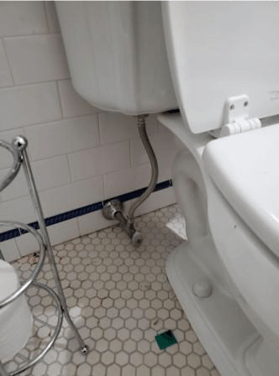We've come across this article relating to How to Prevent Bathroom Water Damage listed below on the net and concluded it made perfect sense to discuss it with you on this page.

The washroom is very prone for damp accumulation and potential water damages as a result of the constant use water in it. This write-up uses basic assessment methods to assist finding water damages hazards.
The constant use water in the shower room makes it very at risk for wet buildup as well as prospective water damage. By inspecting it regularly, you can reduce water associated damages.
The following collection of examinations is simple to carry out and should be done as soon as in every three months in order to maintain your shower room in good shape and to stop possible water damages caused by the bath tub, the shower, pipeline joints as well as plumbing, sinks, cabinets, and also the bathroom
Do not forget executing these assessments and also be extensive while executing them. Bear in mind that these simple assessments can save you a great deal of money by supplying early indicators for water damages
Sinks as well as Cabinets
Sinks and also closets are exposed to dampness and moisture daily as well as are often ignored. Evaluate routinely under the sink as well as on the kitchen counter over it. Repair any drip in the trap as it may recommend drainpipe problems. Take a look around the sink, slow-moving draining pipelines may show a blocked drain. Replace sink seals if they are cracked or loose.
Tub as well as Shower
The shower and also bath tub require special interest as well as upkeep. Examine the floor tiles and replace if fractured. Make sure that there is no missing grout between the ceramic tiles. Examine as well as replace split caulking at joints where the wall surfaces meet the floor or the tub. Blocked drains pipes as well as pipelines troubles will certainly protect against the bath tub from drying out and also might show serious problems beneath the bathtub. Consult with a professional immediately to prevent structural damage. Pay attention to stainings or soft areas around the tub walls as they may indicate an internal leak.
Plumbing
Signs for water damage are tough to identify since the majority of pipes are set up inside the wall surfaces.
Pay unique interest to floor covering and also wall surfaces dampness and also discolorations as they might show an invisible plumbing trouble. Inspect wetness levels in adjacent spaces also.
The Toilet
The toilet is a susceptible water junction. Examine the water lines and also search for leaks around the commode seat, in the pipe, as well as under the water tank. If you discover any type of indicators of dampness on the floor around the toilet, look for leaks in the toilet edge and also storage tank seals.
Know that hanging commode dish deodorants enhances the chances for clogs.
10 TIPS TO PREVENT WATER DAMAGE IN THE BATHROOM
The average household uses approximately 80-100 gallons of water per person per day. For a family of 4, that's almost 2,500 gallons of water a week! The largest portion of this consumption comes from bathroom use. Flushing the toilet uses the most water, followed by taking a shower or bath. With that much water running through the home, water damage in the bathroom is bound to happen. Knowing how to spot signs of a water leak is essential to preventing long-term damage. This guide provides you with tips to reduce the impact of water damage on your bathroom.
CAUSES OF BATHROOM WATER DAMAGE
Pipe breaks are the most common cause of water damage we see in our daily jobs. The age of a pipe plays a large role in a pipe break as well as corrosion. Over time, the metal begins to break down, allowing water to escape. Frozen pipe breaks are also a concern in the winter months. Toilet overflows caused by paper products or children flushing inappropriate items. Degraded caulking around the toilet or bathtub can allow water seepage, sometimes behind the fixture, into the subfloor or walls. Condensation forms when the water in a pipe is cooler than the air temperature. Beads of water form on the exterior of the pipes, sometimes so much so that the water begins to drip and pool below. Sink or shower backups created by poor drainage. HOW TO PREVENT WATER DAMAGE IN YOUR BATHROOM
Inspect your toilet supply line for worn or frayed hoses and replace them as needed. Winterize your plumbing to prevent a frozen pipe break. Use vent fans to prevent condensation that can lead to mold growth. Routinely check and replace degraded caulking around your toilet or bathtub. Increase the temperature in your toilet tank and insulate your pipes during the warm summer months to keep condensation from forming. Use child safety locks on the toilets. Flush only toilet paper. "Flushable" wet wipes are actually not good for your plumbing system. Additionally, feminine hygiene products should not be flushed. Prevent water from escaping the tub or shower. Make sure shower curtains are in good condition. Inspect shower doors and replace the seal strip if necessary. Wipe up any water that accumulates on the floor and use bath mats. Water left to sit can cause damage to the tiles and flooring. Refrain from using bath products containing heavy oils to avoid a clogged drain.

As a keen reader about How to Prevent Bathroom Water Damage, I figured sharing that excerpt was a smart idea. If you enjoyed reading our blog entry if you please remember to pass it around. Thank you for your time spent reading it.
Check Us Out